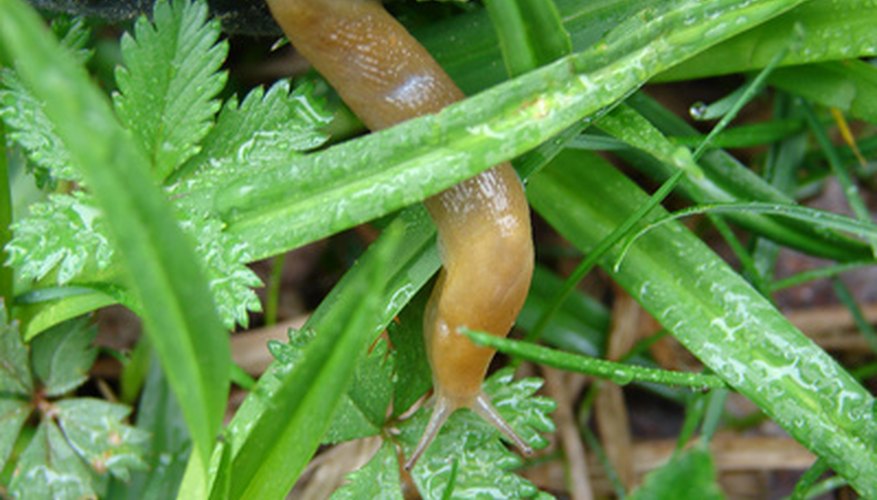If the leaves of your plants are full of holes and a silvery, slimy trail leads from your prize posies, it's a good bet that slugs have been feasting on your plants. Slugs are notoriously hard to control without toxic chemicals, but planting flowers that slugs don't like is worth a try. As a general rule, slugs tend to steer clear of plants with fuzzy, rough or leathery leaves, or plants with strong scents.
Slug Facts
Slugs aren't insects, but are classified as gastropods, along with snails, clams and mollusks. Although slugs feast mostly at night and hide under soil debris during the day, they can often be seen on cloudy, overcast days. Slugs will eat nearly anything if they are hungry enough, but they prefer young, tender, green plants. Because slugs are made mostly of water and mucous, they require moist conditions to survive.
- Slugs aren't insects, but are classified as gastropods, along with snails, clams and mollusks.
- Because slugs are made mostly of water and mucous, they require moist conditions to survive.
Annuals
Although the thick leaves and the light scent of salvia keep slugs at bay, butterflies and hummingbirds flock to the bright, spiky blooms. Poppies are a good choice for a slug-free garden, as their hairy foliage will irritate the slug's slimy outer covering. Nicotiana has blooms in a variety of colours to brighten the landscape, but slugs don't like its fragrance or fuzzy foliage. Coleus may brighten the landscape with its colourful leaves, but the foliage is coarse, much like its cousin, the nettle. Geranium, with its thick leaves and strong scent, is rarely bothered by slugs.
- Although the thick leaves and the light scent of salvia keep slugs at bay, butterflies and hummingbirds flock to the bright, spiky blooms.
- Nicotiana has blooms in a variety of colours to brighten the landscape, but slugs don't like its fragrance or fuzzy foliage.
Perennials
Gardeners love the vivid colours of the black-eyed Susan, but slugs tend to avoid its durable, slightly fuzzy foliage. With its vivid blue blooms, catmint is an attractive perennial. While people and cats like catmint's aroma, slugs don't enjoy it and will usually stay away. Echinacea, with its bright, daisy-like flowers, is a good choice for a slug-free garden, as slugs will avoid the thick, slightly furry foliage. Although hostas are a slug's favourite meal, some varieties are more slug-proof. Hostas with thick, slug-resistant leaves, include Big Daddy, Drinking Gourd, Blue Dimples, and Blue Plate Special. Ferns are slug-resistant plants, making them ideal for planting in the moist, dark conditions that slugs love.
- Gardeners love the vivid colours of the black-eyed Susan, but slugs tend to avoid its durable, slightly fuzzy foliage.
- Ferns are slug-resistant plants, making them ideal for planting in the moist, dark conditions that slugs love.
Shrubs
Rhododendron is a woody shrub with spectacular blooms, and the waxy coating on its leaves discourages slugs. Ilex, also known as holly, is a can't-miss plant for a slug-free garden, as the prickly, serrated leaves of the plant will keep slugs away. Mahonia, an evergreen shrub with sharp-edged foliage similar to ilex, is another slug-resistant shrub.
